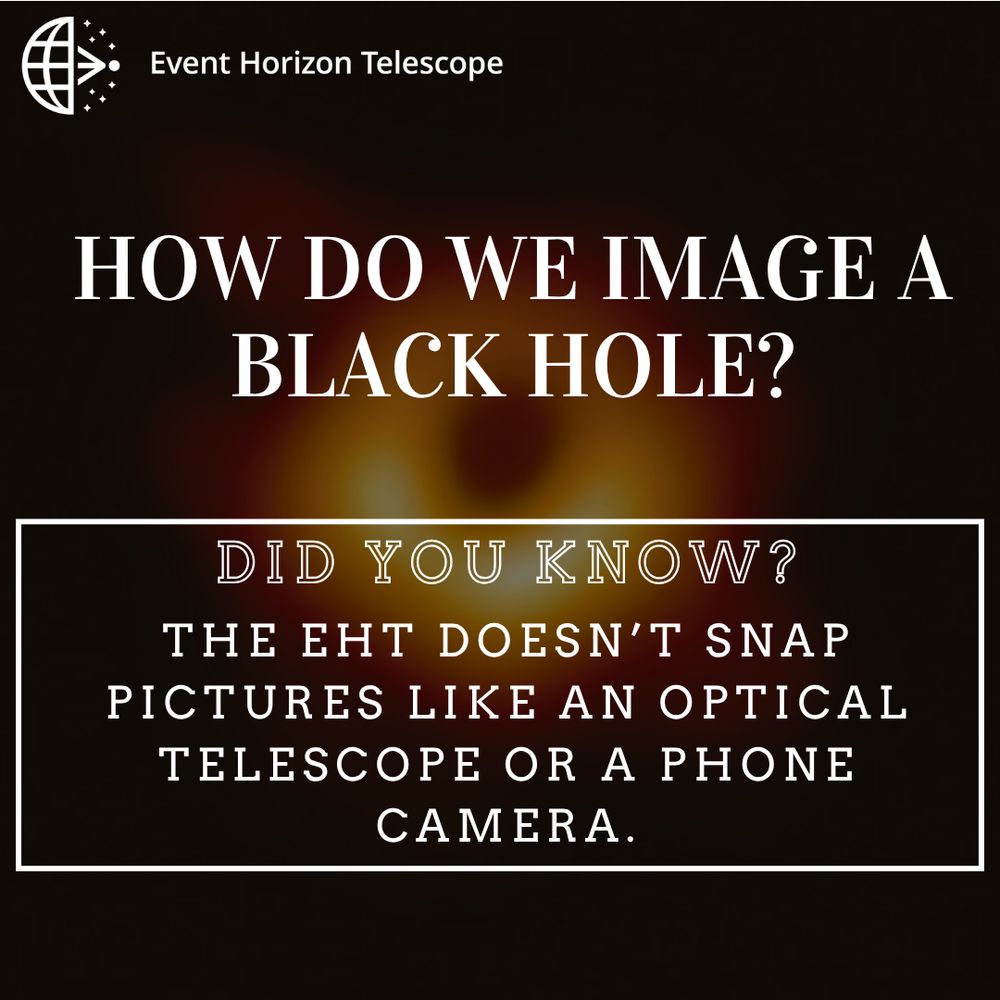🔤EHT A–Z
We’re breaking down the science behind the Event Horizon Telescope - one letter at a time.
📡F is for Fourier Transform
The math that turns telescope data into black hole images.
Check out this brilliant video by Katie Bouman that explains the concept: www.youtube.com/watch?v=t5cS...
10.10.2025 14:07 — 👍 6 🔁 3 💬 0 📌 0
🔤 EHT A–Z
We’re breaking down the science behind the Event Horizon Telescope - one letter at a time.
📡 E is for Event Horizon
The point of no return. It’s the invisible boundary around a black hole - cross it, and not even light can escape.
#BlackHoles #EHTAZ #Astronomy
08.10.2025 15:00 — 👍 5 🔁 4 💬 0 📌 0
🔤 EHT A–Z
We’re breaking down the science behind the Event Horizon Telescope - one letter at a time.
📡 D is for Delay
Light from M87* doesn’t hit all EHT telescopes at once. Those tiny microsecond delays help us pinpoint where the signal came from- and map what it looks like.
06.10.2025 14:09 — 👍 6 🔁 1 💬 0 📌 0
🔤 EHT A–Z
We’re breaking down the science behind the Event Horizon Telescope - one letter at a time.
📡 C is for Calibration
Calibration corrects errors from the atmosphere, instruments & measurements- revealing the true cosmic signals.
#BlackHoles #EHTAZ #Astronomy
02.10.2025 15:29 — 👍 8 🔁 3 💬 0 📌 0
🔤 EHT A–Z
We’re breaking down the science behind the Event Horizon Telescope - one letter at a time.
📡 B is for Baseline
A baseline is the distance and orientation between two radio telescopes - it sets how sharp our cosmic images can be.
#BlackHoles #EHTAZ #Astronomy
30.09.2025 14:53 — 👍 7 🔁 2 💬 0 📌 1
New EHT images show M87*’s magnetic fields changing: turning one way in 2017, settling in 2018, then reversing by 2021.
The flip may result from internal magnetic structure and external effects like a Faraday screen.
Credit: EHT Collaboration | Animation: Amy C. Oliver (CfA)
19.09.2025 12:00 — 👍 55 🔁 9 💬 2 📌 0
What are the stripes in the images of M87*?
They show the direction of polarized light. This animation shows how M87 would look over the years through a polarizer- like the filters in reflex cameras or 3D glasses.
Animation: I. Martí-Vidal (Univ. Valencia)
17.09.2025 13:31 — 👍 9 🔁 3 💬 1 📌 1
The new image of M87* just released today comes to life in this stunning animation, revealing its incredible evolution over the years!
Watch closely and see how this mysterious supermassive black hole changes over time.
Credit: EHT Collaboration | Animation: Saurabh (MPIfR)
16.09.2025 15:00 — 👍 42 🔁 13 💬 1 📌 1

Groundbreaking new image! The EHT reveals the dynamic environment around black hole M87*.
The 2021 image shows a distinct shift in polarization patterns, tracing changes in magnetic fields near the event horizon.
eventhorizontelescope.org/new-eht-imag...
16.09.2025 07:00 — 👍 104 🔁 32 💬 3 📌 6

Art meets science!
At this year’s Burning Man festival, artist Andrey Sledkov unveiled a stunning sculpture titled “An Event Horizon.”
Do you see the resemblance to the polarized image of M87* captured by the EHT?
Artist on Instagram: artsled_project
12.09.2025 15:00 — 👍 6 🔁 0 💬 0 📌 0

Four scientists stand in suits, holding certificates and awards, in front of a large blue screen for the International Congress of Basic Science

Four scientists stand in suits, holding certificates and awards, in front of a large blue screen for the International Congress of Basic Science
We are pleased to announce that the Event Horizon Telescope Collaboration has been awarded the 2025 Frontiers of Science Award for the first image of the central supermassive black hole in M87*!🤩🏆
EHT scientists José-Luis Gómez and Andrew Chael accepted the prize in Beijing. #space #astronomy #eht
05.08.2025 19:08 — 👍 7 🔁 0 💬 0 📌 1
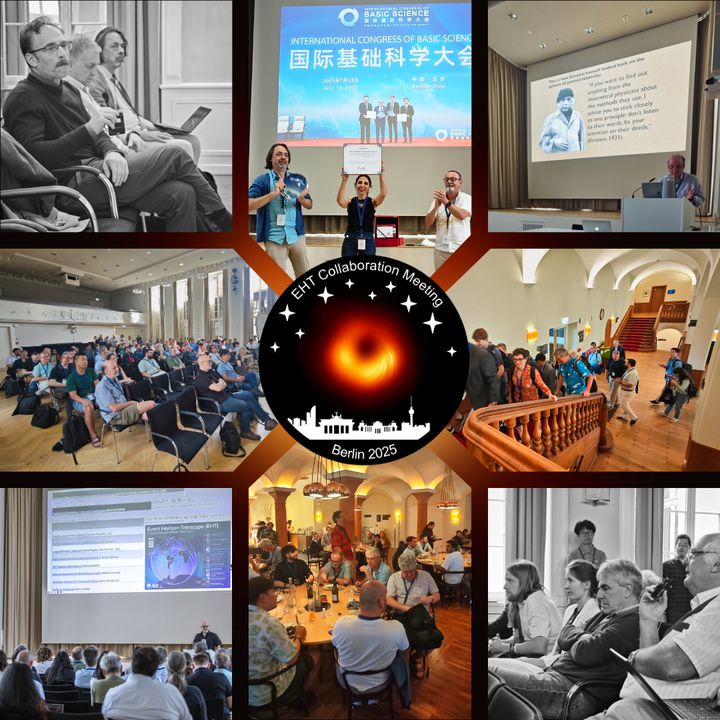
🌍📡 The global Event Horizon Telescope (EHT) team met earlier this month in Berlin for the 2025 Collaboration Meeting!
120+ researchers shared breakthroughs, planned 2026 observations, and discussed turning black hole images into time-lapse “movies.” #astronomy #blackholes #globalscience
01.08.2025 15:27 — 👍 5 🔁 1 💬 0 📌 0
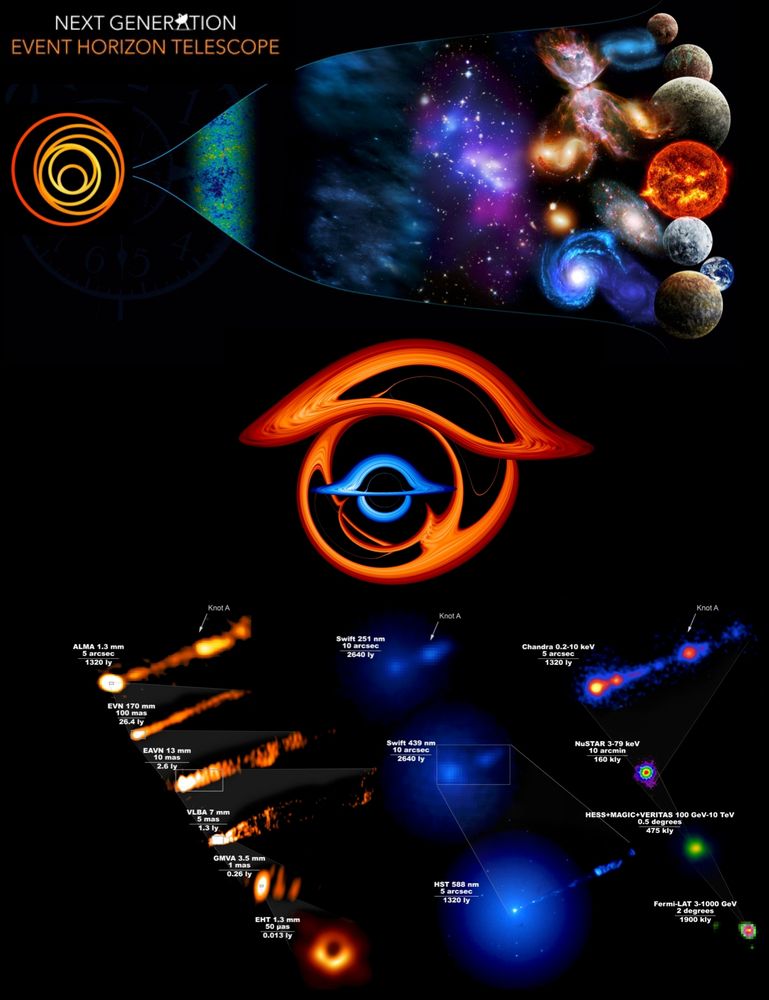
Black hole science doesn't just include the EHT; the Next-Generation Event Horizon Telescope will soon capture black hole movies to study how black holes feed, launch jets, and warp spacetime✨🎬
Read the award-winning paper by EHT-affiliated scientists🥇https://www.mdpi.com/2075-4434/11/3/61 #space
11.07.2025 21:16 — 👍 13 🔁 0 💬 0 📌 0
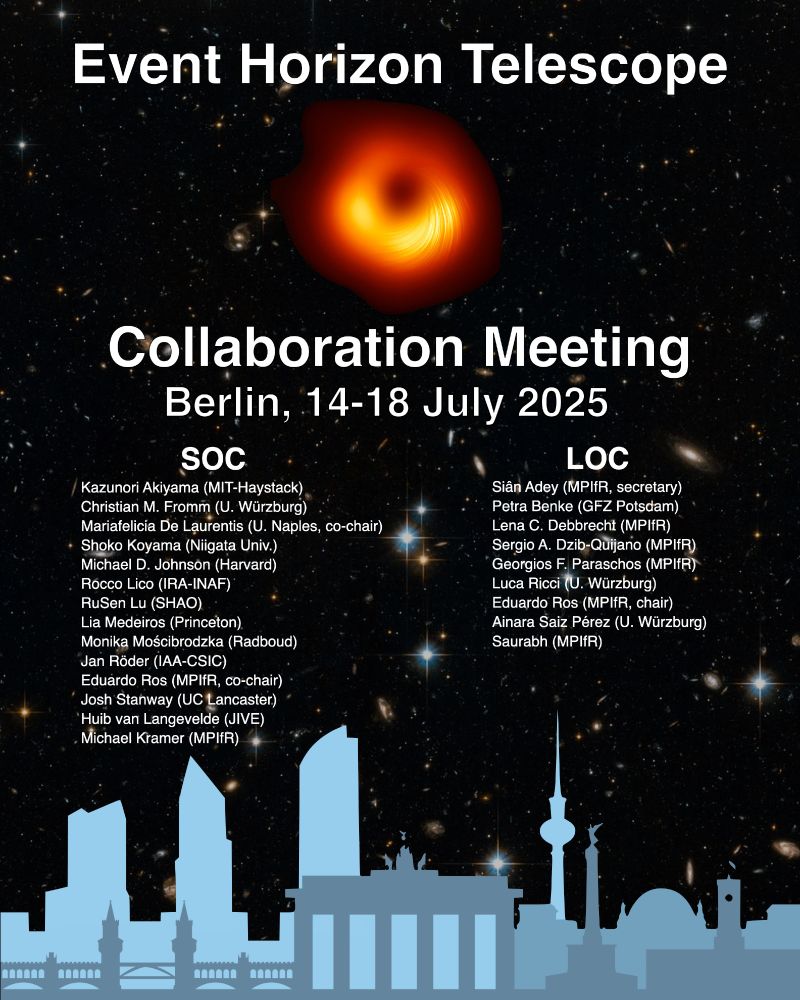
Next week, The Event Horizon Telescope (EHT) Collaboration will hold its 2025 meeting in Berlin!🇩🇪
120 international scientists will gather to discuss the next big goals for black hole science – publishing new, better images using recent data and creating "movies" of M87*✨ #space #blackhole
11.07.2025 17:52 — 👍 5 🔁 0 💬 0 📌 0
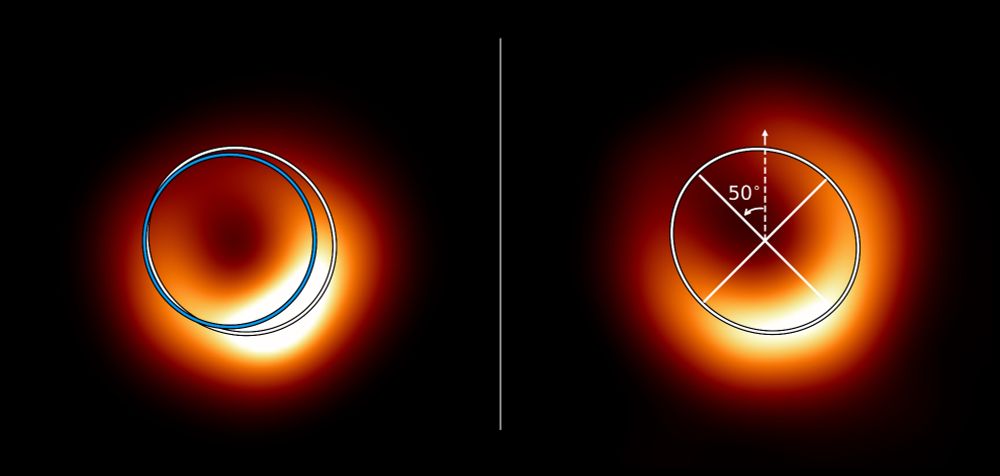
Two glowing yellow and red rings (the black holes) against a black background and separated down the middle by a thin white line. The left black hole has a blue circle and white elliptical shape overlaid. The right black hole has just the elliptical overlaid, with white lines to show how the black hole aligns with the shape.
Imagine a donut...now squash it🍩. That's what the black hole inside M87* looks like!
New EHT research reveals that the squishy distortion is not due to gravity, but the turbulent, swirling plasma around the black hole: www.aanda.org/10.1051/0004... #space #blackhole #astronomy #astrophysics
10.07.2025 13:29 — 👍 156 🔁 19 💬 7 📌 3
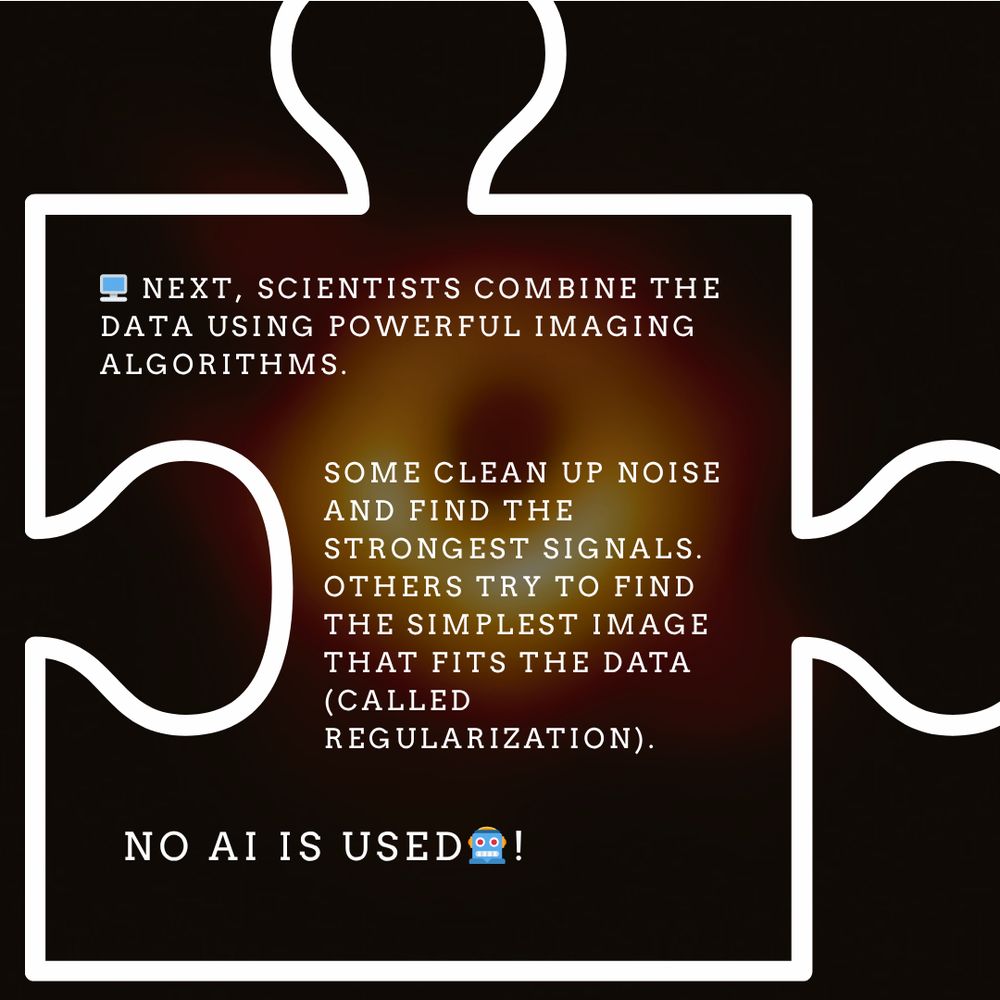
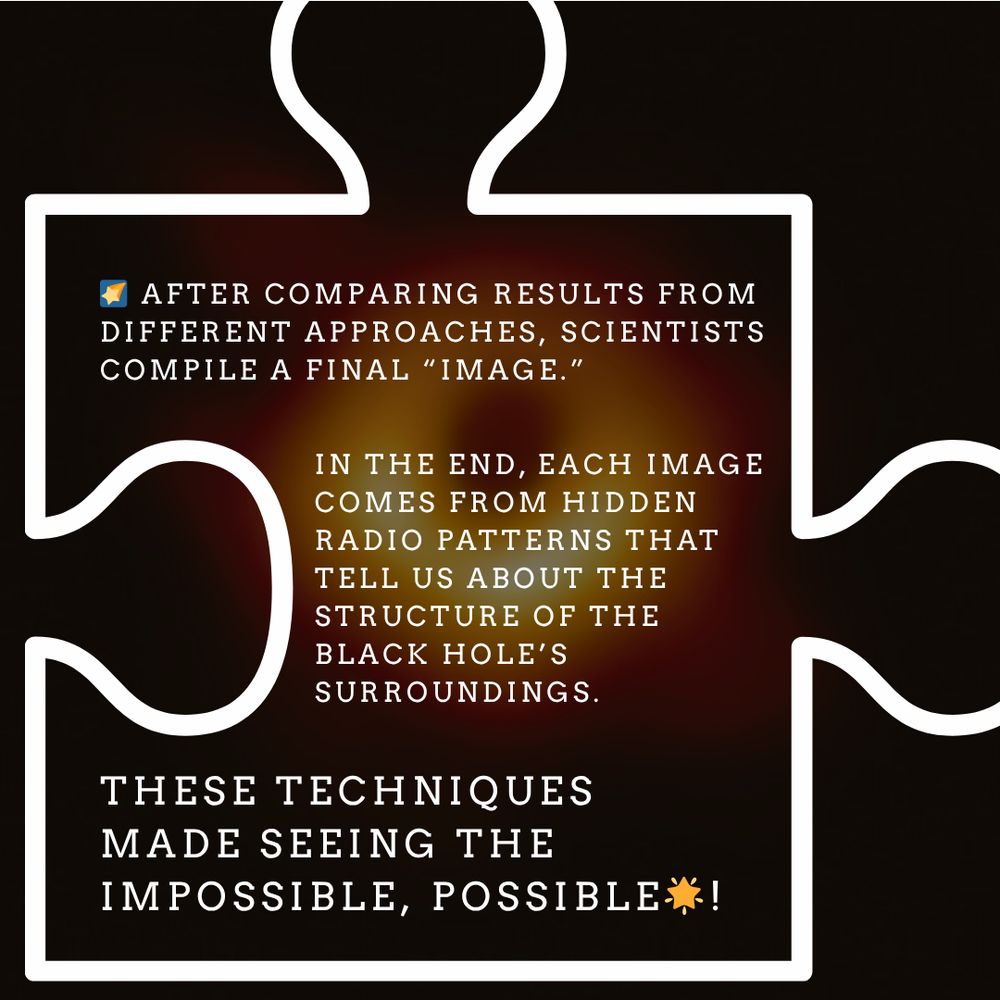
(2/2)
30.06.2025 13:56 — 👍 4 🔁 1 💬 0 📌 0
Today's black hole science lesson💫✏️🤓 #BlackHole #science #astronomy #space #astrophysics
Simulation credit: Vedant Dhruv (University of Illinois at Urbana-Champaign)
20.06.2025 18:55 — 👍 8 🔁 0 💬 0 📌 0

The Internet vs. Black Hole Data. Did you know? When the Event Horizon Telescope captured its first data...we had a problem! A petabyte-sized problem.

8 telescopes across the globe. ~5 petabytes of data collected. 10 gbps internet connection would take ~7 weeks to send the data to supercomputers - assuming everything worked perfectly.

So, what did we do? We flew the data. Physical transport turned out to be faster than the internet. Even the south pole data had to wait out the winter!
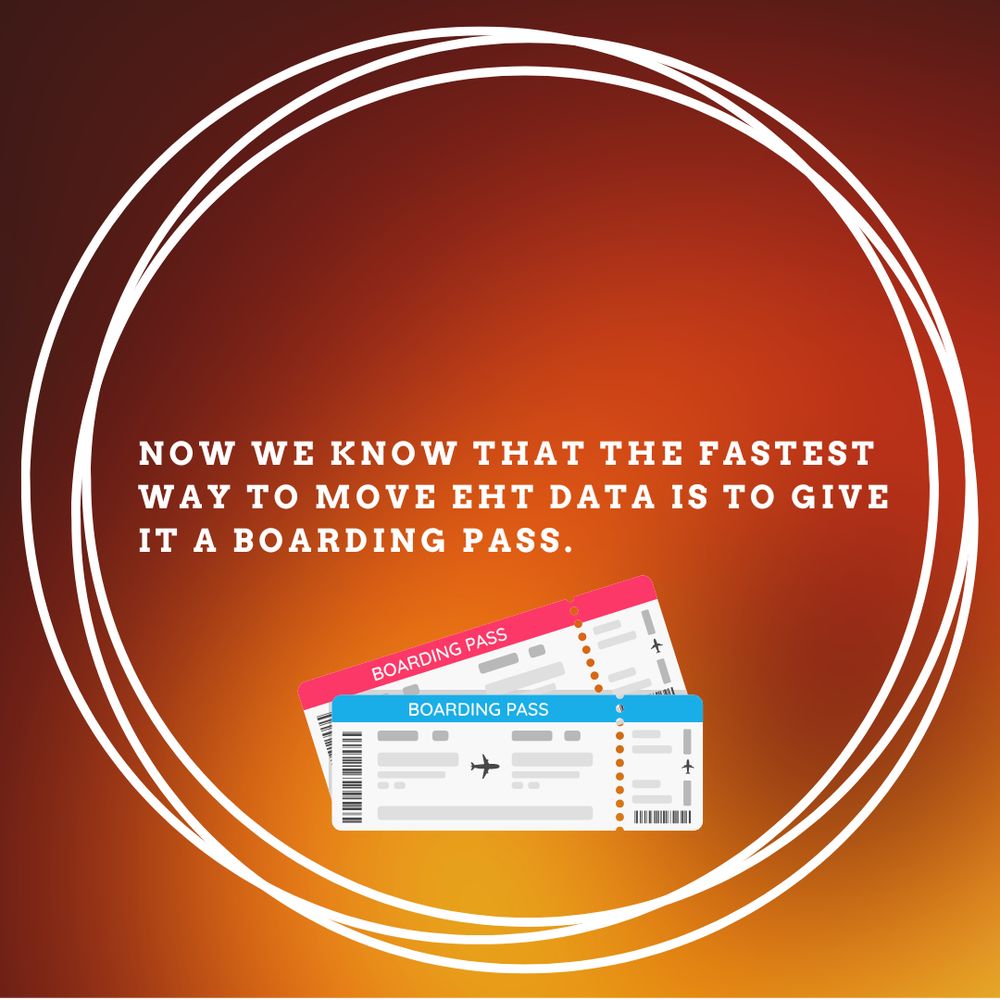
Now we know that the fastest way to move EHT data is to give it a boarding pass.
Did you know? ✈️
13.06.2025 20:22 — 👍 6 🔁 0 💬 0 📌 0
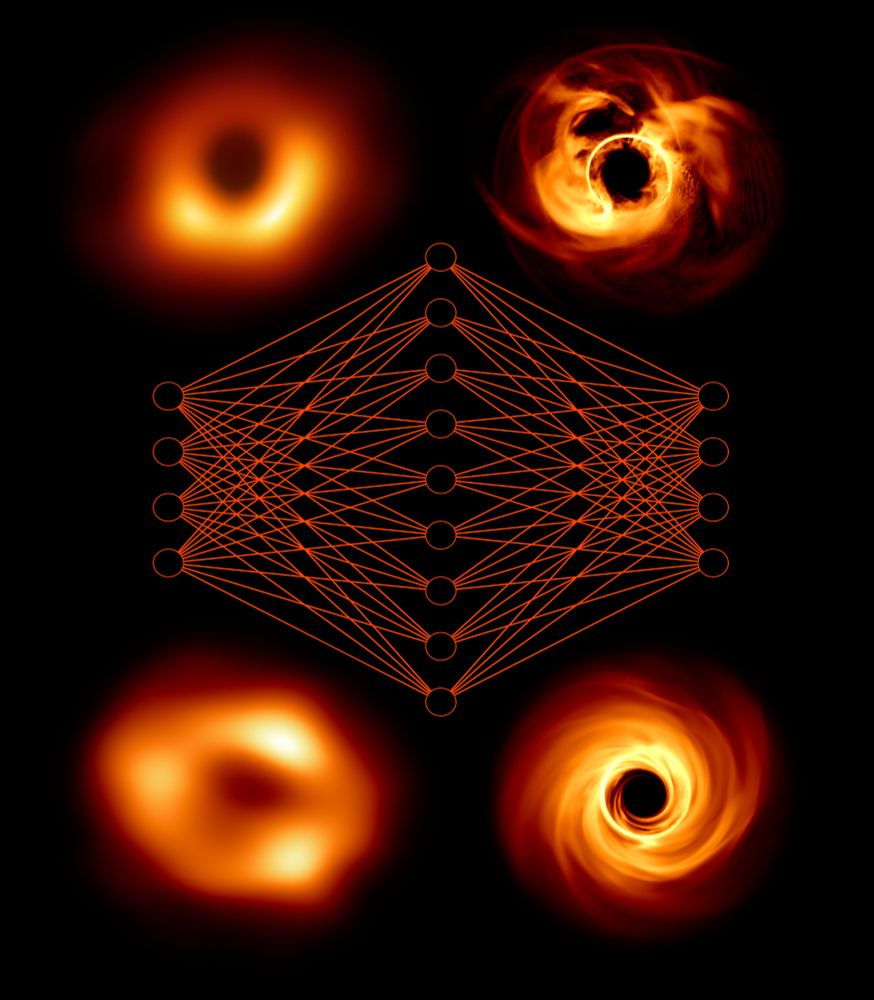
Did you know that black holes are spinning?🌀🔎 To find out just how fast, EHT researchers used AI to connect simulated data to actual EHT measurements of M87 and SgrA*.
They found that the black hole in SgrA* is spinning almost as fast as physically possible! www.aanda.org/10.1051/0004...
06.06.2025 13:03 — 👍 14 🔁 1 💬 0 📌 0
Could you starwatch all night? The IRAM 30-m telescope can!✨🌌 This observing mode is called VLBI, which involves telescopes around the world viewing the same object at the same time, such as a black hole, then combining the data to get super-high-resolution images.
23.05.2025 22:43 — 👍 25 🔁 6 💬 0 📌 2
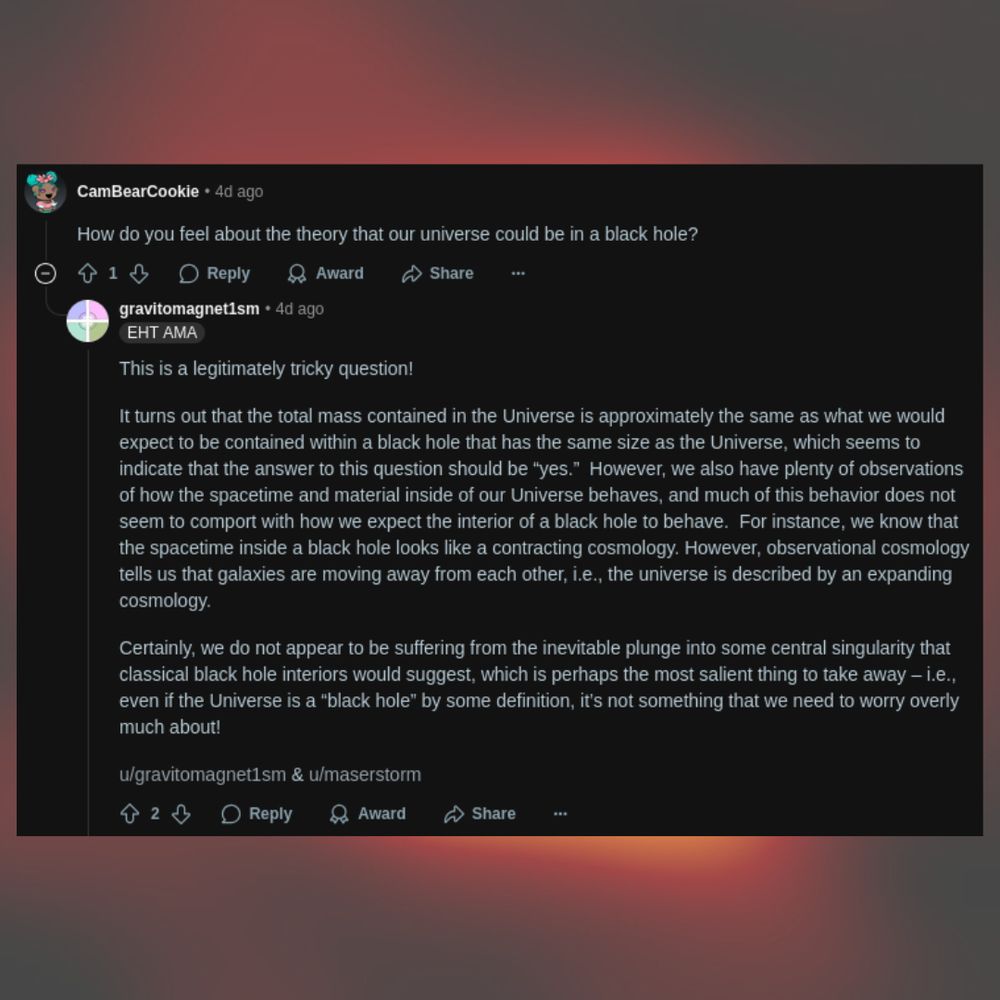
Question: How do you feel about the theory that our universe could be in a black hole?
Answer: This is a legitimately tricky question!
It turns out that the total mass contained in the Universe is approximately the same as what we would expect to be contained within a black hole that has the same size as the Universe, which seems to indicate that the answer to this question should be “yes.” However, we also have plenty of observations of how the spacetime and material inside of our Universe behaves, and much of this behavior does not seem to comport with how we expect the interior of a black hole to behave. For instance, we know that the spacetime inside a black hole looks like a contracting cosmology. However, observational cosmology tells us that galaxies are moving away from each other, i.e., the universe is described by an expanding cosmology.
Certainly, we do not appear to be suffering from the inevitable plunge into some central singularity that classical black hole interiors would suggest, which is perhaps the most salient thing to take away – i.e., even if the Universe is a “black hole” by some definition, it’s not something that we need to worry overly much about!
u/gravitomagnet1sm & u/maserstorm
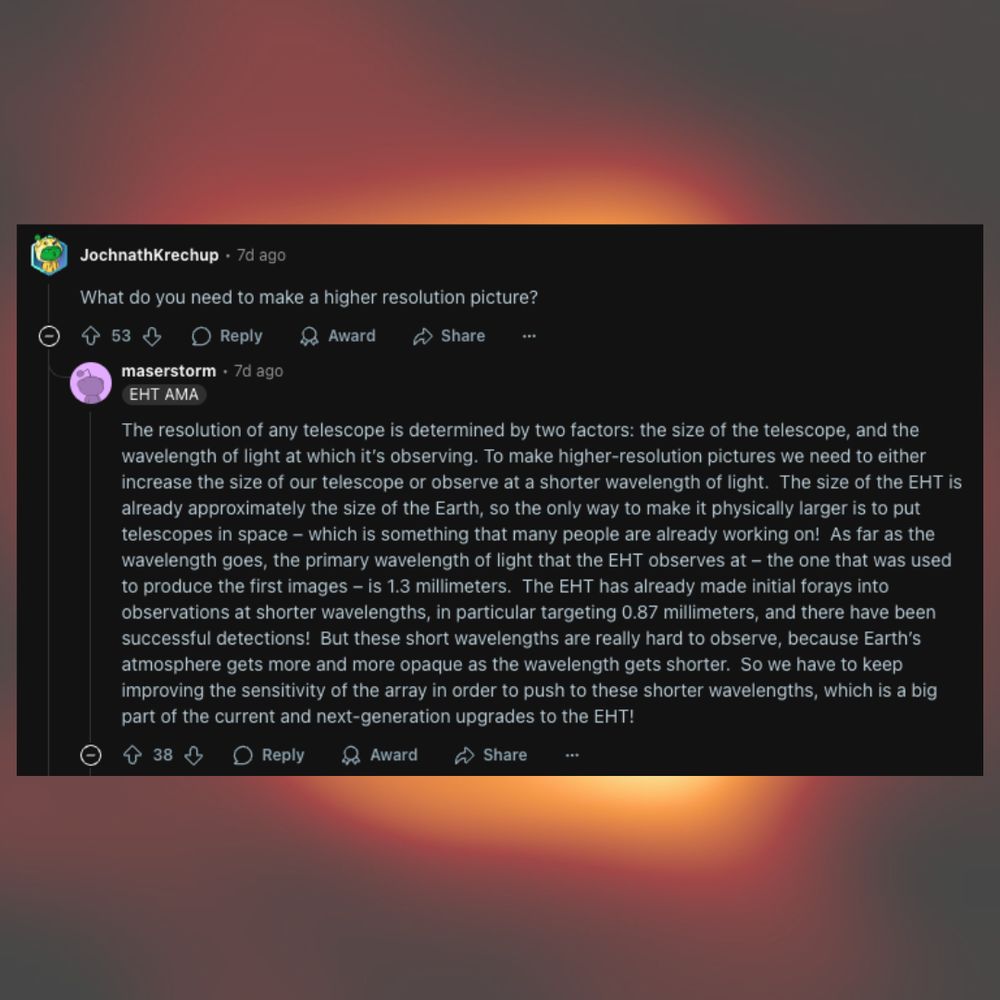
Question:
What do you need to make a higher resolution picture?
Answer: The resolution of any telescope is determined by two factors: the size of the telescope, and the wavelength of light at which it’s observing. To make higher-resolution pictures we need to either increase the size of our telescope or observe at a shorter wavelength of light. The size of the EHT is already approximately the size of the Earth, so the only way to make it physically larger is to put telescopes in space – which is something that many people are already working on! As far as the wavelength goes, the primary wavelength of light that the EHT observes at – the one that was used to produce the first images – is 1.3 millimeters. The EHT has already made initial forays into observations at shorter wavelengths, in particular targeting 0.87 millimeters, and there have been successful detections! But these short wavelengths are really hard to observe, because Earth’s atmosphere gets more and more opaque as the wavelength gets shorter. So we have to keep improving the sensitivity of the array in order to push to these shorter wavelengths, which is a big part of the current and next-generation upgrades to the EHT!
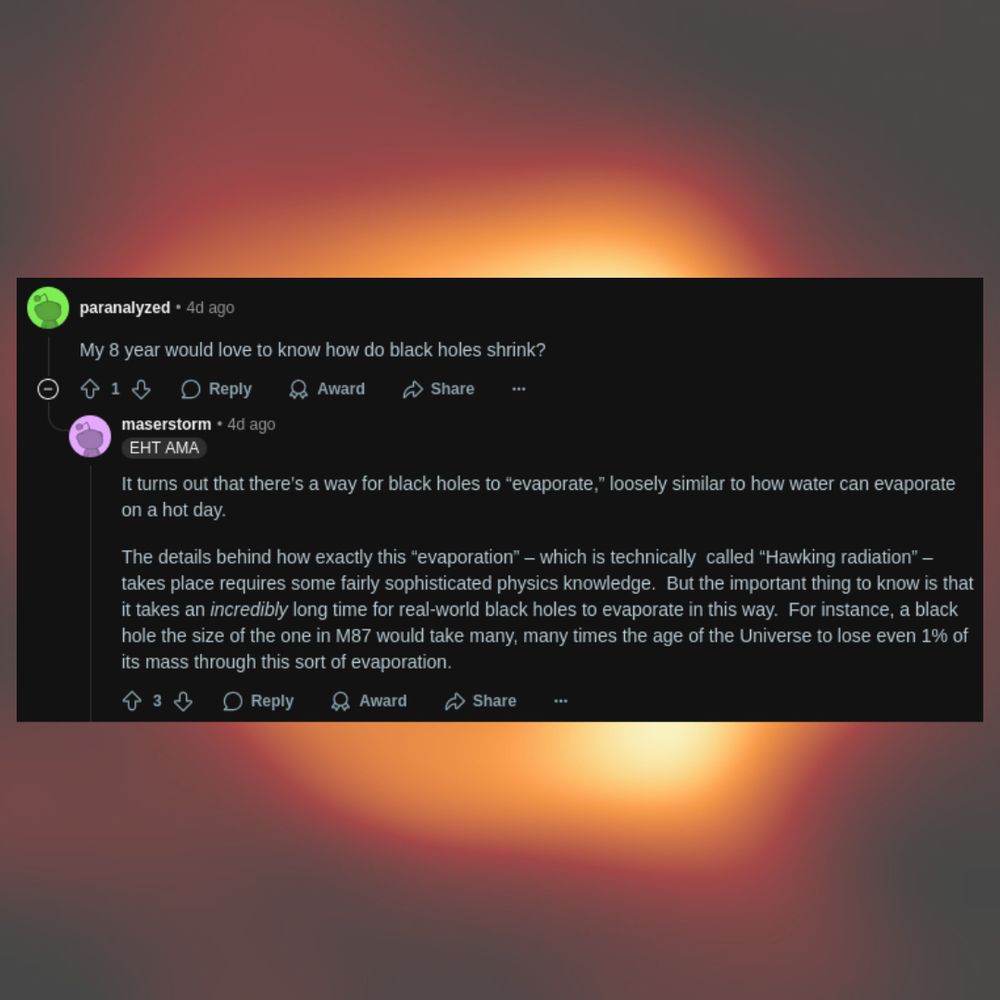
Question: My 8 year would love to know how do black holes shrink?
Answer:
It turns out that there’s a way for black holes to “evaporate,” loosely similar to how water can evaporate on a hot day.
The details behind how exactly this “evaporation” – which is technically called “Hawking radiation” – takes place requires some fairly sophisticated physics knowledge. But the important thing to know is that it takes an incredibly long time for real-world black holes to evaporate in this way. For instance, a black hole the size of the one in M87 would take many, many times the age of the Universe to lose even 1% of its mass through this sort of evaporation.
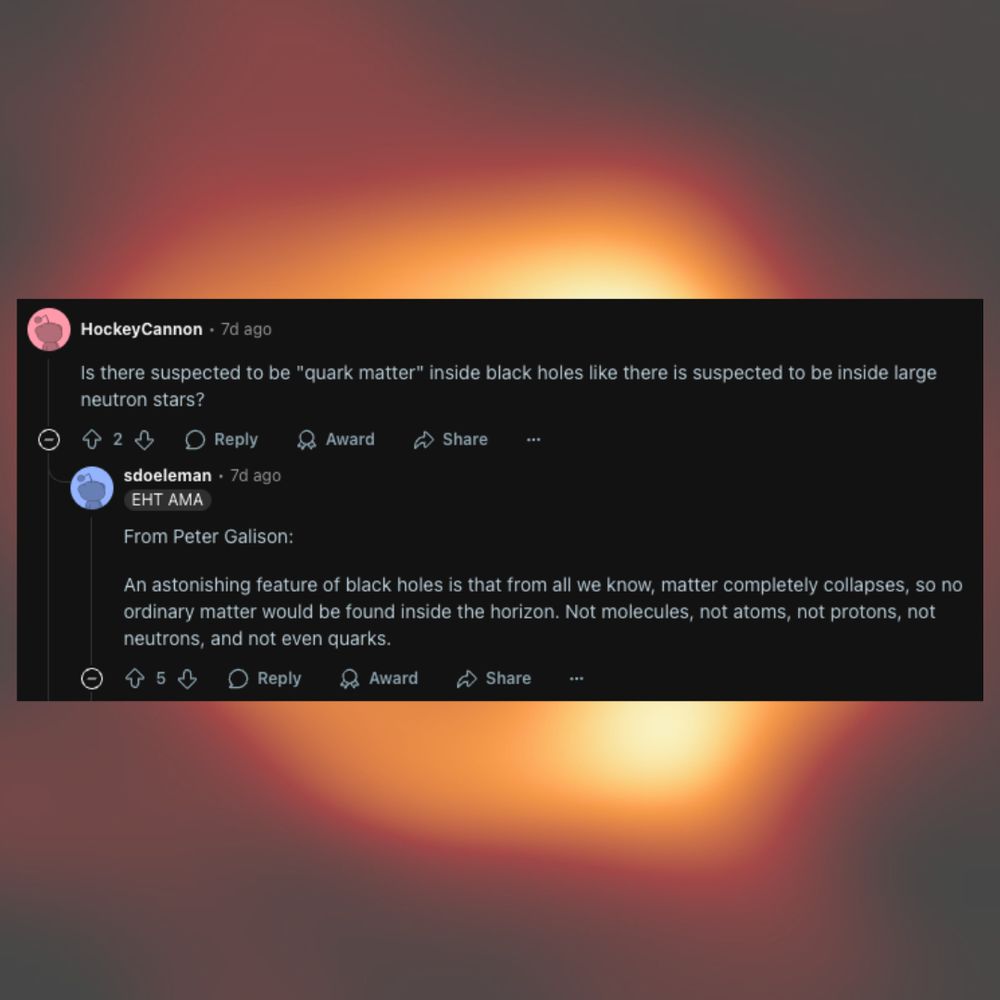
Question: Is there suspected to be "quark matter" inside black holes like there is suspected to be inside large neutron stars?
Answer: From Peter Galison:
An astonishing feature of black holes is that from all we know, matter completely collapses, so no ordinary matter would be found inside the horizon. Not molecules, not atoms, not protons, not neutrons, and not even quarks.
"You asked, we answered!🫡 Here are some of our favorite questions from last Friday's Reddit Ask Me Anything for #BlackHoleWeek2025
Have more questions about the mysteries of black holes❓Read the full thread here: www.reddit.com/r/askscience...
16.05.2025 21:03 — 👍 5 🔁 1 💬 0 📌 0
As we've seen this Black Hole Week, black holes have gone from theory to image, from mysteries to measurements. Now, the EHT is entering a new era, where more telescopes around the world — and maybe in space — will capture time-lapse “movies” of black holes. Popcorn, anyone?🎥🍿
12.05.2025 15:16 — 👍 17 🔁 5 💬 1 📌 1
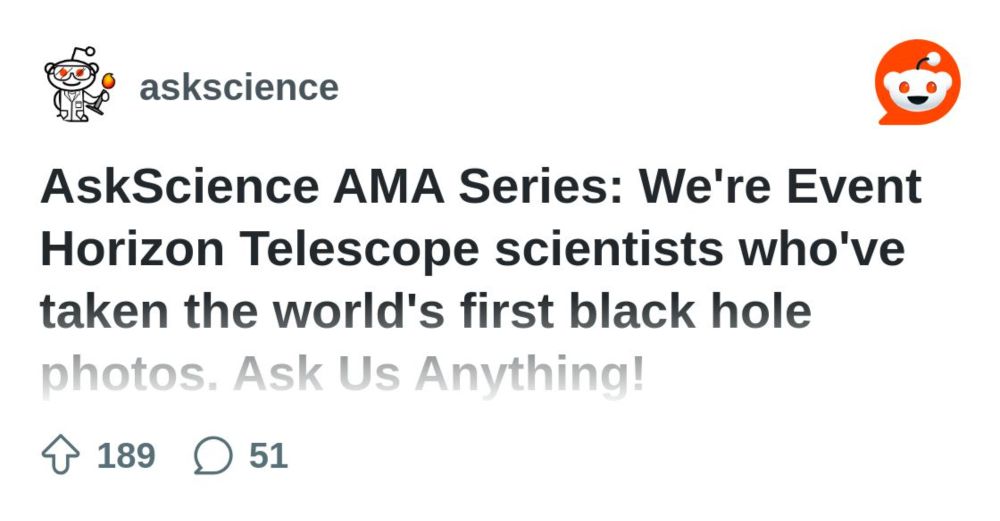
From the askscience community on Reddit: AskScience AMA Series: We're Event Horizon Telescope scientists who've taken the world's first black hole photos. Ask Us Anything!
Explore this post and more from the askscience community
Do you have burning black hole questions? Are you curious about the process of astronomy imaging and engineering, space physics or theory? To wrap up Black Hole Week, join the EHT for an Ask Me Anything on Reddit this afternoon from 3-5 pm ET! redd.it/1kig9rj
09.05.2025 15:44 — 👍 2 🔁 1 💬 1 📌 1
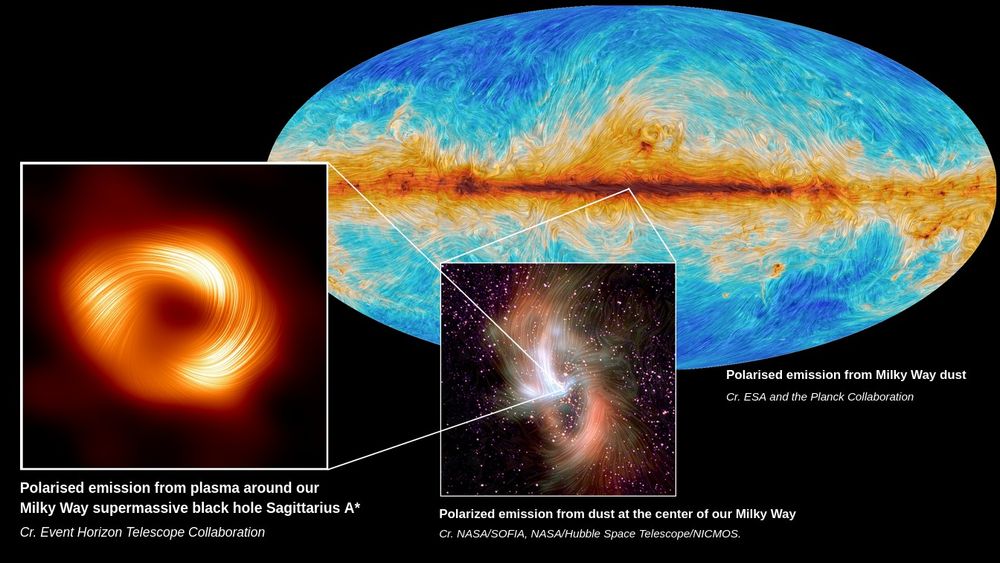
Blue, yellow, and red swirls in an oval shape represent the Milky Way's polarized emission from dust. An inset image in the center of spiraling rust and white shows the polarized dust emission at the center of the Milky Way. An inset image on the left shows streaky spirals of bright yellow and orange around a hazy black center: the Sag A* black hole at the center of the Milky Way.
About 27,000 light years away, with a mass of more than 4 million Suns, lies the Milky Way’s supermassive black hole Sagittarius A*.
If you were to approach it, you’d be deceived by its size - the shadow is roughly twice as big as the black hole’s actual surface!⚫️
08.05.2025 13:57 — 👍 5 🔁 3 💬 0 📌 0
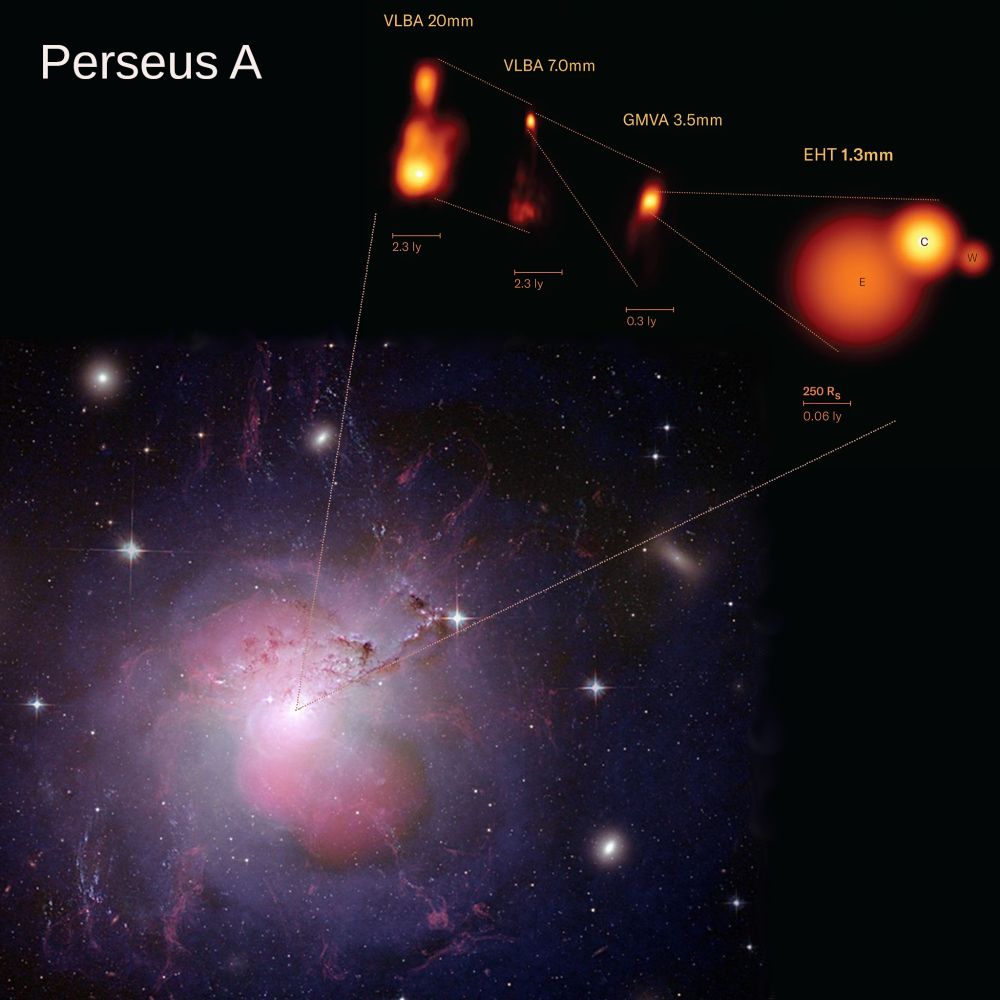
Swirling clumps of purple and pink form a galaxy in the bottom left, set against a dark blue starry sky. To the top right is an inset image of different-sized orange blobs, representing the emission seen by the EHT and other collaborations.
Behold Perseus A, one of the closest active supermassive black holes, at 230 million light years away.
Composite images like this one from the NRAO, Chandra, Hubble, and the EHT can help us study black holes and their environments, which influence each other.🛰️
07.05.2025 13:06 — 👍 10 🔁 3 💬 0 📌 0
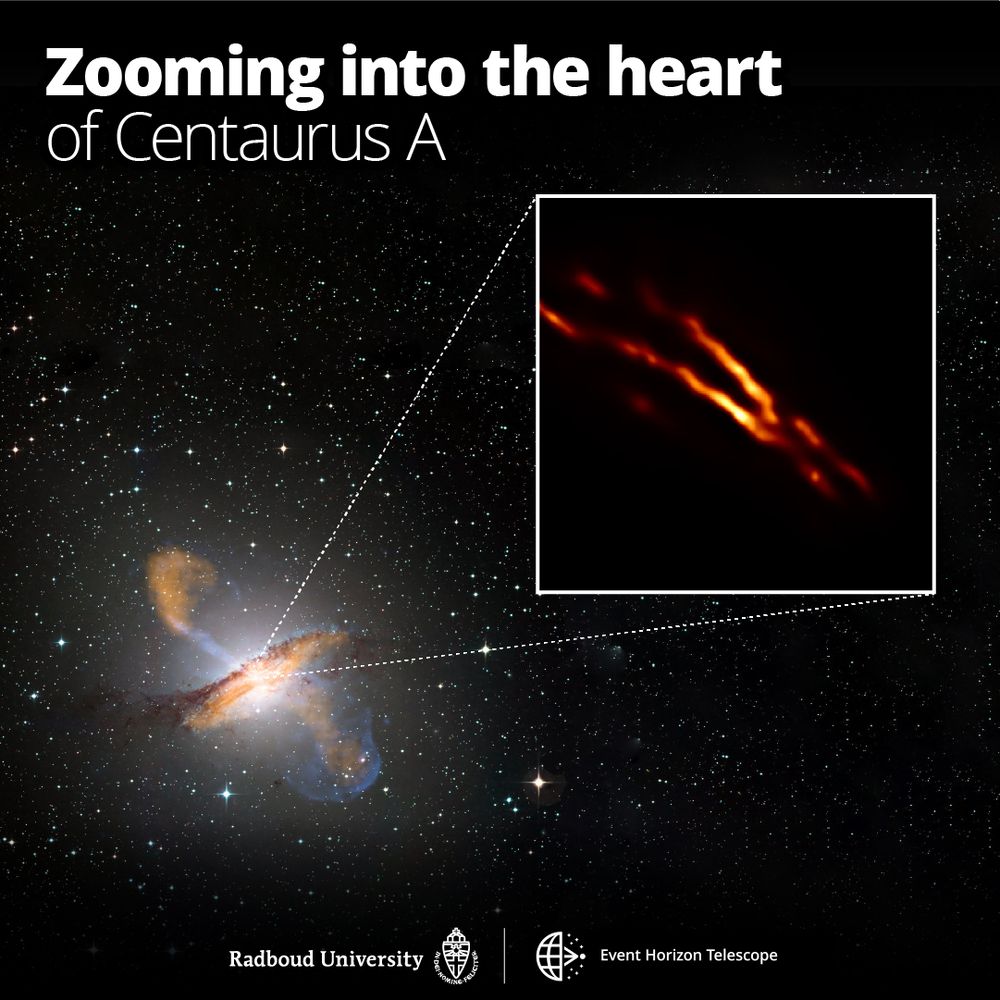
A photo of the galaxy Centaurus A, seen in orange and blue tufts against a black starry sky. There is a inset image to the right that shows two orange lines, which is a zoomed in version of the glowing heart of the galaxy, where the jets reside.
Centaurus A is the closest radio galaxy to Earth. Radio galaxies feature two-sided jets that are ejected from the galaxy’s central black hole and measure up to millions of light years long. These jets are theorized to spread energy and affect the growth of their host galaxies.💫
06.05.2025 13:44 — 👍 41 🔁 8 💬 0 📌 0
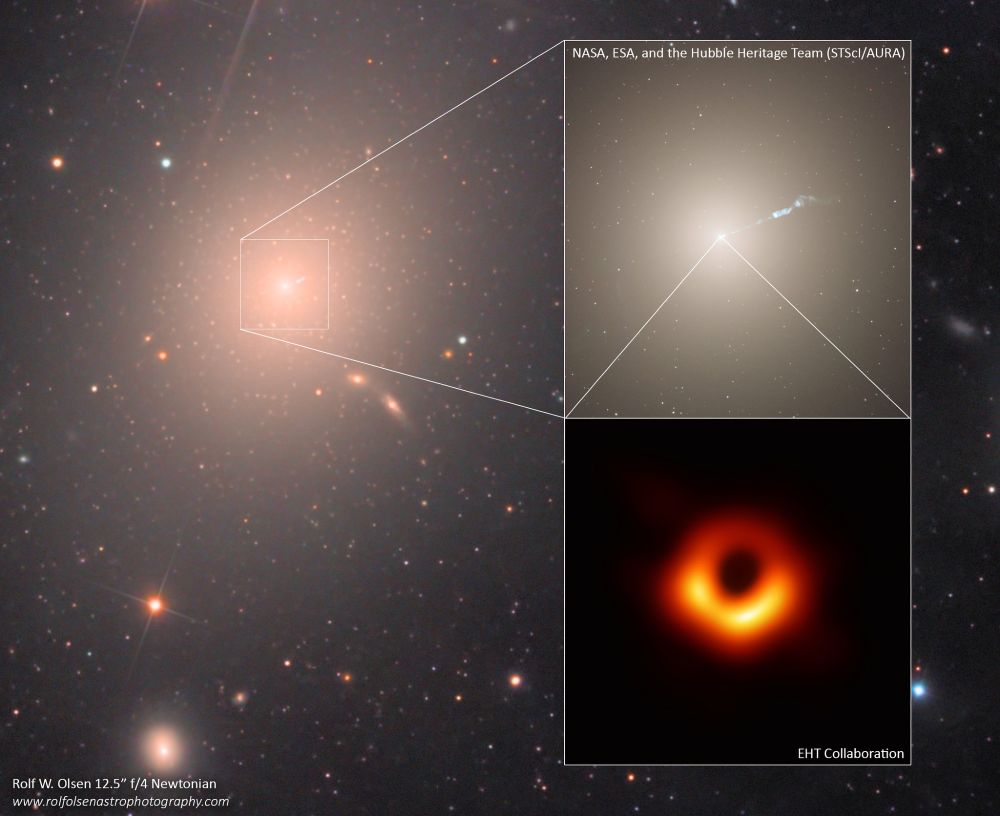
Happy Black Hole Week! This is Messier 87; despite being located about 55 million light years away, the EHT peered at its beating heart in 2017 for its first image.
Did you know that the location of the brightest region around the black hole, and its shadow, can change yearly?🔭 #BlackHoleWeek2025
05.05.2025 13:10 — 👍 31 🔁 7 💬 0 📌 1
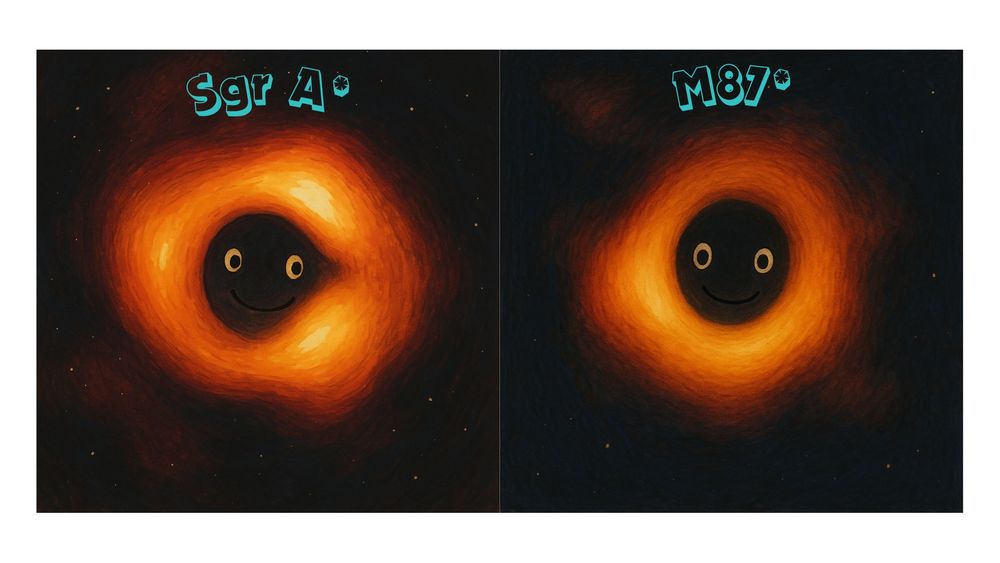
Ever wonder how to study the nature of spacetime and the edges of physics? These mischievous black holes have a clue!
Join the Event Horizon Telescope for #BlackHoleWeek2025, May 5th-9th, as we highlight pieces of the black hole science jigsaw puzzle.🌟 #astronomy #astrophysics #blackholes
02.05.2025 23:15 — 👍 9 🔁 1 💬 0 📌 0





















